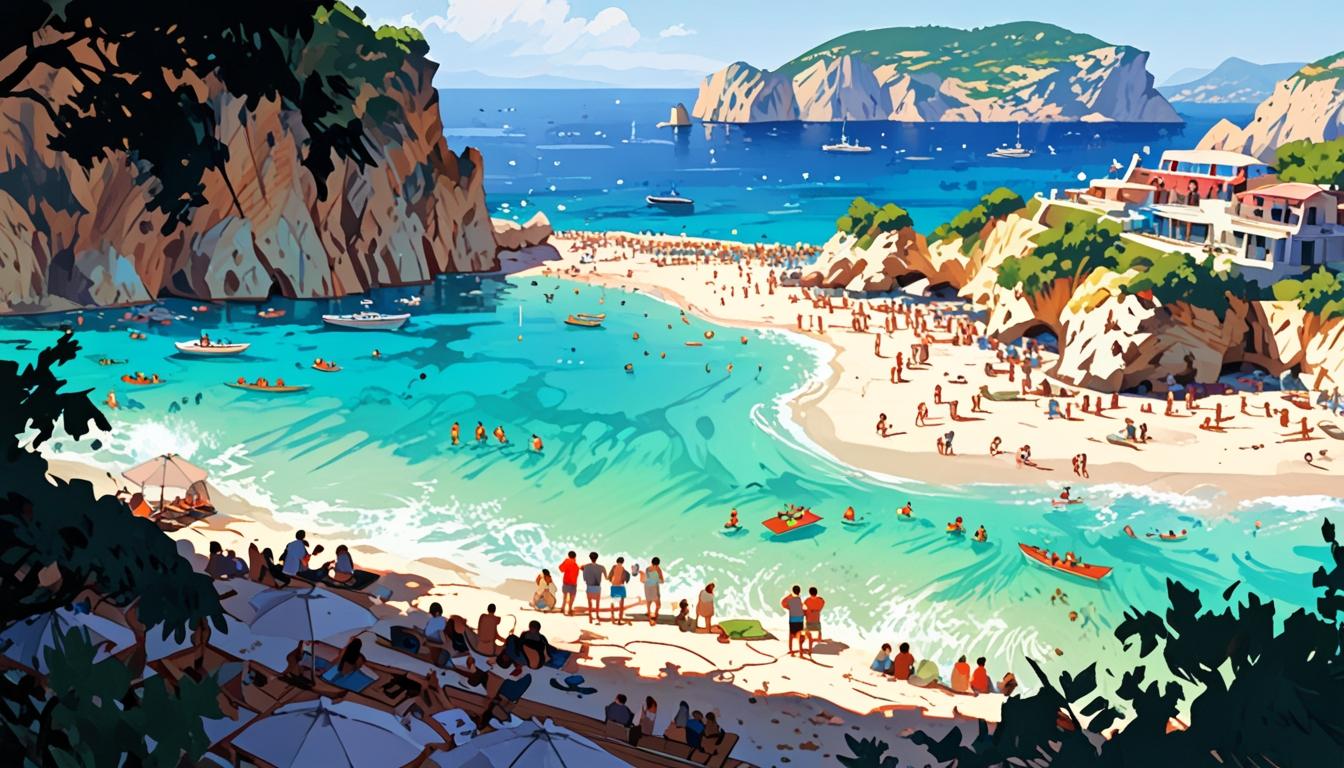In the Mediterranean Sea, the Greek island of Zakynthos, commonly known as Zante, has emerged in headlines as Europe's most crowded resort, with overnight stays outnumbering its resident population by an alarming margin of 150 to one. The report from Which? Travel highlights the pervasive issue of overtourism, a growing concern that threatens the integrity of various popular European destinations. This phenomenon is not unique to Zakynthos; many regions are grappling with the negative impacts of unchecked visitor numbers, raising urgent questions about sustainability and the future of tourism.
Local historian Roger Silver provides a poignant comparison, reminiscing about Great Yarmouth's bustling past when vast crowds would flock to the resort. He reflects on the days when 10,000 visitors arrived by train for a single event in 1901—a stark contrast to the current overtourism scenarios seen in locales like Zakynthos and even the Italian ski village of Roccaraso, which recently faced an unanticipated influx of tourists due to social media fame. Mayor Francesco Di Donato of Roccaraso responded to this overwhelming surge with intentions to call in the army to restore order, a sign of the palpable distress such developments can cause for small communities unprepared for the chaos that mass tourism can incite.
Rory Boland, editor of Which? Travel, articulates a growing consensus that many destinations are now reaching a tipping point, where the negative impacts of mass tourism—such as inflated property prices, strain on local services, and an uptick in anti-social behaviour—seem to overshadow the economic benefits that visitors can bring. This sentiment echoes through the ongoing discussions around tourism in Greece, particularly on islands like Santorini and Mykonos, which face similar challenges of overcrowding and environmental degradation.
Historical perspectives on overtourism reveal that concerns regarding the overwhelming presence of tourists are not a modern issue; Professor Richard Butler from the University of Strathclyde points out that complaints date back well over a century. However, the complexities today often arise in destinations newly introduced to mass tourism, which struggle to cope with the infrastructure demands that come with a sudden influx of visitors. Established tourist hubs such as Blackpool or Las Vegas have weathered such transitions with relative success due to their long history of tourism as a primary economic activity.
Tourism strategies often lag behind changes in visitor behaviour and volume. For instance, while Istria in Croatia is touted as the second most crowded destination according to the Which? report, it continues to be marketed as a “best-kept secret.” Such disparities highlight a disconnect between the realities of tourist pressures and the narratives that destinations promote to attract visitors.
On the other hand, there are still hidden gems in Europe that offer a more tranquil experience. According to Which? recommendations, lesser-known areas in Eastern Europe—such as Rybnik in Poland and Severoistočen in North Macedonia—present opportunities for enjoying authentic local cultures without the encumbrance of overwhelming crowds. Mircea Crisbășanu, who leads biking tours in Romania, notes that many villages in the south remain untouched by mass tourism, boasting beautiful traditional architecture and welcoming communities.
Contrastingly, the Norwegian island of Jan Mayen stands as a curious example of a completely secluded destination, drawing zero visitors due to its remoteness and stringent access requirements—a stark reminder of what lies at the farthest end of the tourism spectrum.
Back in Great Yarmouth, where ambitions for tourism revitalisation linger, Silver expresses a wistful desire for more cruise ship arrivals, indicative of a community that yearns to engage with the tourism sector once languishing under the weight of its extraordinary past. With Europe’s most crowded resorts grappling with the growing spectre of overtourism, the need for responsible and sustainable travel practices has never been more critical. As destinations assess their futures, creating a balance between economic viability and preserving local communities and environments will determine the trajectory of tourism in the years to come.
Reference Map
- Paragraphs 1, 2, 3, 4, 5, 8
- Paragraphs 1, 2, 3
- Paragraphs 1, 3
- Paragraphs 1, 2, 6
- Paragraphs 1, 6
- Paragraph 1, 7
- Paragraph 6
Source: Noah Wire Services
